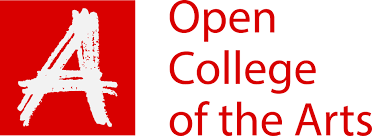This post discusses John Szarkowski’s views on colour photography with reference to his essay that accompanied ‘The William Eggleston Guide’. The book was first published in 1976 to accompany the exhibition ‘Photographs by William Eggleston’ at MoMA New York the same year.
Szarkowski (1925 – 2007) was an author, curator and photographer and regarded as key voice on art photography during the latter half of the 20th Century. He initially came to my attention during the OCA Expressing Your Vision (EYV) module where we looked at his ‘Photographer’s Eye’ publication where he documented the attributes of a photograph. This formed part of the modernist/post modern discussion where Szarkowski believed the content was all in the frame, the modernist view.
He was also known for his role as curator at the Museum of Modern Art in New York (1962-1991) where he acted as a barometer for what was in fashion or not. One of his most significant, and at the time brave, decisions was to put on a solo show of the ‘colour’ work of William Eggleston in 1976. Controversial at the time and seen today as a key moment in the acceptance of colour in photographic art.
During a feedback session with my EYV tutor in 2016, I had expressed a concern of my lack of understanding of essays such as Szarkowski’s ‘William Eggleston Guide’. I return to it now as research for my Assignment 4 essay. Not only as an education in writing art critique’s but also to glean some extra knowledge of the emergence of colour in the world of photography.
For assignment 4 I have chosen the black and white image ‘Toy Horse’ (1987) by Abelardo Morell. It has similarities to Eggleston’s ‘Untitled, Memphis 1970 (a.k.a. ‘Tricycle’), the image used as the front cover image of William Eggleston’s Guide. The obvious difference being ‘Colour’, or more importantly, the lack of it.
Szarkowski begins his essay by challenging Eggleston’s view that his images are only about colour, nothing more, nothing less. Szarkowski thinks this is a convenient way for the artist to sidestep specific questions about content and how that may relate to the artist himself. He concedes that, even if true, a photograph and its meaning is a combination of the photographic process and the photographer. Eggleston’s images tell us something about his identity even if he does not want us to read them that way.
Szarkowski moves in to the main discussion of the use of colour by ‘serious’ photographers and , as he saw it, their failure in producing anything meaningful with it. There is an acceptance that photographers knew that their black and white pieces were not natural but were taken because ‘they looked good, and seemed to mean something, as pictures’. The emphasis was on form and the introduction of colour was a complication too far, based on decades of learning the language of black and white imagery.
The essay continues in the vain of disparaging terms and descriptions for amateurs mindlessly pointing and shooting with colour film. He viewed the National Geographic colour images as interesting for cobalt blue skies but nevertheless they were fundamentally failures in form. His other observation was photographers using it to show beautiful colours in pleasing relationships resembling ‘reproductions of Synthetic Cubist or Abstract Expressionist paintings’. He dismissed these photographs as being inferior to paintings so in his view, why bother producing something worse with photography.
He saw that using colour outside of the studio was problematic and photographers were either producing work that was either formless or pretty. ‘In the first case the meanings of color have been ignored; in the second they have been considered at the expense of allusive meanings. While editing directly from life, photographers have found it too difficult to see simultaneously both the blue and the sky.’
He then moves on to some examples of successful uses of colour photography by the likes of Helen Levitt, Joel Meyerowitz, Stephen Shore who were using it for street photography, capturing the everyday and the commonplace. He affirmed that they were not ‘photographs of colour’ but photographs of an experience in the hands of artists using their imagination and precision. His acceptance of Eggleston’s colour work, taken in 1971, is in the fact that the images show the locality, the place, the family and brings it to life for the viewer in colour.
Szarkowski seems to be accepting of a colour photographer as an artist more than the colour images themselves. He accepted earlier in the essay that colour adds a complication to the art form, but rather than see it as something new to learn and excel at, he has the opinion that it really isn’t worth the hassle.
Although he was presenting Eggleston’s work for people to view, he had prepared his ‘don’t shoot the messenger’ excuse up front within this essay. Not too brave or visionary in my view even if there was lot of hostility around the photographic art world at the time.
